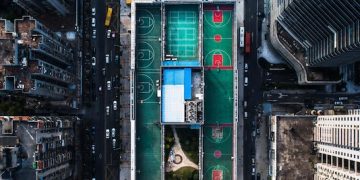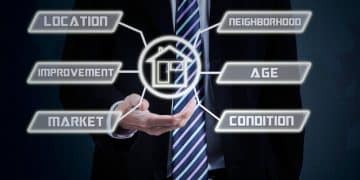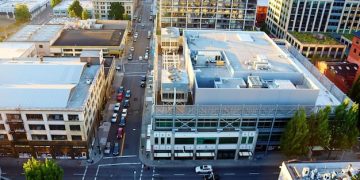REIT Modernization: Unlock Profits with Property Upgrades
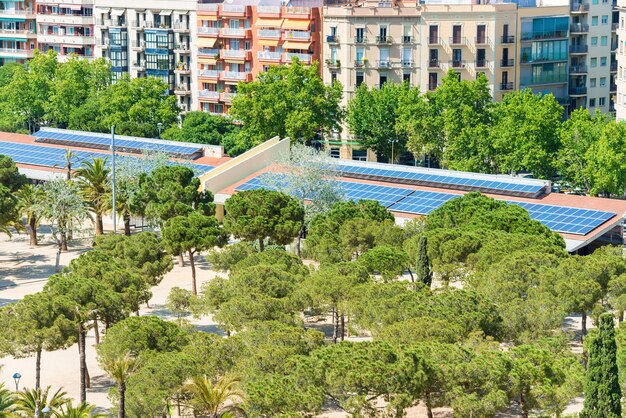
REIT modernization revolves around property upgrades, with the right strategies unlocking higher cash flows for investors through energy-efficient renovations, enhanced amenities, and technological integrations.
Investing in Real Estate Investment Trusts (REITs) can be a strategic move, but to truly maximize your returns, understanding REIT modernization: how to profit from REITs investing in property upgrades is crucial. Upgrading properties within a REIT’s portfolio offers a pathway to increased cash flow and enhanced long-term value.
Understanding REIT Modernization
REIT modernization is a critical aspect of maintaining and growing the profitability of real estate investment trusts. It involves upgrading properties to meet current market demands and technological advancements.
As tenant expectations and market conditions evolve, REITs must adapt to remain competitive and appealing to investors and renters.
What is Property Modernization?
Property modernization involves upgrading properties to improve their appeal, functionality, and value. This can include energy-efficient renovations, enhanced amenities, and technological integrations.
The goal is to attract high-quality tenants and increase rental income, ultimately boosting the REIT’s overall profitability.
- Energy-efficient renovations to reduce operating costs.
- Enhanced amenities such as fitness centers, coworking spaces, and pet-friendly areas.
- Technological upgrades like smart building systems and high-speed internet.
Effective property modernization can significantly increase the net operating income (NOI) and market value of a REIT’s portfolio.
The Benefits of Modernizing REIT Properties
Modernizing REIT properties yields numerous benefits, from attracting high-value tenants to boosting long-term investment returns. These advantages can enhance the REIT’s appeal to investors and ensure its sustainability.
By implementing strategic upgrades, REITs can position themselves for greater profitability and competitiveness in the market.
Attracting High-Value Tenants
Modernized properties with updated amenities and technologies attract high-value tenants who are willing to pay premium rents. These tenants often have higher credit scores and are more likely to renew their leases.
By investing in modernization, REITs can ensure a steady stream of rental income from reliable tenants.
Boosting Property Values
Modernizations such as eco-friendly renovations and smart home features can substantially increase property values. Buyers are increasingly seeking properties with modern amenities which can lead to higher appraisal values and greater investment returns.
Upgrading can lead to properties that are more attractive, and ultimately, more valuable.

Modernization efforts not only enhance tenant satisfaction and increase rental income but also significantly boost the long-term profitability and financial stability of REITs.
Strategies for Profiting from Property Upgrades
To effectively profit from property upgrades, REITs need to adopt strategic approaches that consider various factors like market trends, tenant preferences, and financial planning.
Understanding these strategies is essential for maximizing the return on investment in modernization projects.
Evaluate Market Trends and Tenant Preferences
Before initiating any modernization project, it’s crucial to evaluate current market trends and understand tenant preferences. Conduct market research to identify the amenities and features that are in high demand in your target demographic.
Understanding trends can involve incorporating feedback from current tenants and analyzing data from similar properties.
Prioritize Energy-Efficient Renovations
Energy-efficient renovations can significantly reduce operating costs and attract environmentally conscious tenants. These renovations include installing energy-efficient windows, HVAC systems, and insulation.
Energy-efficient upgrades not only lower utility bills but also improve the property’s carbon footprint, making it more appealing to environmentally conscious renters.
- Installing solar panels to generate renewable energy.
- Implementing smart thermostats and lighting systems.
- Using water-efficient fixtures to reduce water consumption.
By prioritizing sustainability, REITs can attract tenants who value eco-friendly living and reduce their environmental impact.
Financing REIT Modernization Projects
Financing modernization projects requires careful planning and consideration of various funding sources. REITs should evaluate different financing options to determine the most cost-effective and suitable approach.
Securing adequate funding is crucial for executing modernization projects successfully and maximizing their financial impact.
Traditional Financing Methods
Traditional financing methods include bank loans, mortgages, and lines of credit. These options typically require a detailed financial plan and a strong credit history.
REITs with a proven track record of successful projects and stable cash flow are more likely to secure favorable terms from lenders.
Alternative Financing Options
Alternative financing options include private equity, crowdfunding, and green bonds. Private equity firms may be willing to invest in modernization projects in exchange for a share of the profits.
Crowdfunding platforms allow REITs to raise capital from a large number of small investors.
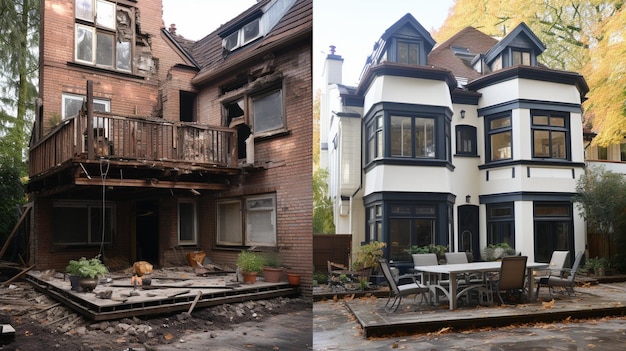
By exploring alternative financing options, REITs can diversify their funding sources and tap into new pools of capital.
Case Studies: Successful REIT Modernization
Examining successful REIT modernization projects provides valuable insights into the strategies and approaches that drive profitability. These case studies demonstrate the tangible benefits of investing in property upgrades.
These examples highlight the importance of strategic planning, effective execution, and a focus on tenant satisfaction.
Example 1: Multifamily Apartment Complex
A multifamily apartment complex implemented energy-efficient renovations and upgraded amenities such as a fitness center and coworking space. As a result, the property attracted high-value tenants, increased rental income by 20%, and boosted property values by 15%.
The modernization project not only improved the property’s financial performance but also enhanced its reputation and appeal in the market.
Example 2: Commercial Office Building
A commercial office building integrated smart building systems and created collaborative workspaces to attract tech companies and startups. The upgrades reduced energy consumption by 30%, increased tenant satisfaction scores, and boosted rental rates by 25%.
This project transformed the office building into a modern, high-tech facility that catered to the needs of innovative businesses.
These case studies underscore the potential for REITs to achieve significant financial gains and enhance their market positioning through smart, strategic property updates.
Measuring the ROI of REIT Modernization
Measuring the return on investment (ROI) of REIT modernization projects is crucial for assessing their success and making informed decisions about future investments. REITs should use a combination of financial metrics and qualitative assessments to evaluate the impact of modernization efforts.
Understanding the ROI helps REITs refine their strategies and allocate resources effectively.
Key Financial Metrics
Key financial metrics for measuring ROI include net operating income (NOI), capital expenditure (CAPEX), and internal rate of return (IRR). The NOI measures the profitability of the property after deducting operating expenses but before accounting for debt service and taxes.
CAPEX represents the funds used to acquire, upgrade, and maintain physical assets.
- Calculate the increase in NOI resulting from the modernization project.
- Determine the total CAPEX invested in the upgrades.
- Calculate the IRR to assess the overall profitability of the investment.
By tracking these metrics, REITs can quantify the financial impact of modernization and identify areas for improvement.
Future Trends in REIT Modernization
The future of REIT modernization is shaped by emerging trends in technology, sustainability, and tenant expectations. REITs need to stay ahead of these trends to maintain their competitive edge and attract forward-thinking investors.
Adapting to future trends will require innovation, flexibility, and a commitment to continuous improvement.
Technological Advancements
Technological advancements such as artificial intelligence (AI), the Internet of Things (IoT), and virtual reality (VR) are transforming the real estate industry. AI-powered systems can optimize building operations, predict maintenance needs, and personalize tenant experiences.
IoT devices enable real-time monitoring of energy consumption, occupancy levels, and environmental conditions.
By adopting these technologies, REITs can enhance operational efficiency, improve tenant satisfaction, and unlock new revenue streams.
| Key Point | Brief Description |
|---|---|
| 🌱 Energy Efficiency | Reducing costs and attracting eco-conscious tenants. |
| 🏢 Property Value Boost | Modernizations increase appeal and long term value. |
| 💼 Attracting Tenants | High-value tenants pay premium rents for up-to-date amenities. |
| 💡 Smart Upgrades | Technology offers opportunities for efficiency & convenience. |
Frequently Asked Questions
▼
REIT modernization involves upgrading properties to meet current market demands, making them more appealing to tenants and increasing rental income, thus enhancing the REIT’s overall profitability.
▼
REITs can finance modernization projects through traditional methods like bank loans and mortgages, or alternative options such as private equity, crowdfunding, and green bonds, depending on their specific needs.
▼
Key benefits include attracting high-value tenants willing to pay premium rents, boosting property values through updated amenities, reducing operating costs with energy-efficient upgrades, and enhancing overall sustainability.
▼
REITs should calculate ROI using metrics like Net Operating Income (NOI), Capital Expenditure (CAPEX), and Internal Rate of Return (IRR) to quantify the financial impact of modernization and identify areas for improvement.
▼
Yes, consider technological advancements like AI and IoT, sustainability initiatives driving green building, and shifting tenant expectations for modern amenities, especially as they promote efficiency and convenience.
Conclusion
Investing in REIT modernization through strategic property upgrades presents a significant opportunity to enhance profitability and long-term value. By understanding market trends, prioritizing energy efficiency, and leveraging innovative technologies, REITs can attract high-value tenants, boost property values, and stay ahead in a competitive market. Staying informed and adaptable can help investors successfully navigate the evolving landscape of REIT investments.


